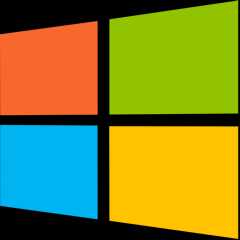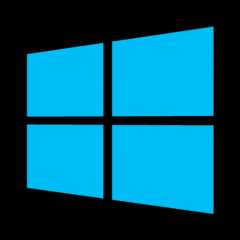- Notifications
You must be signed in to change notification settings - Fork165
A modern cross-platform low-level graphics API
License
DiligentGraphics/DiligentCore
Folders and files
| Name | Name | Last commit message | Last commit date | |
|---|---|---|---|---|
Repository files navigation
Diligent Core is a modern, cross-platform low-level graphics API that forms the foundation ofDiligent Engine.It provides implementations for Direct3D11, Direct3D12, OpenGL, OpenGLES, Vulkan, and WebGPU rendering backends.A Metal backend is also available for commercial clients. In addition, the module includes essential platform-specific utilities.Diligent Core is fully self-contained and can be built independently of the rest of the engine.For details on supported platforms, features, and build instructions, please refer to themain repository.
| Platform | Build Status |
|---|---|
 Win32 Win32 | |
 Universal Windows Universal Windows | |
 Linux Linux | |
 Android Android | |
 MacOS MacOS | |
 iOS iOS | |
 tvOS tvOS | |
 Web Web |
- Cloning the Repository
- API Basics
- Low-level API interoperability
- NuGet package build instructions
- License
- Contributing
- Release History
To get the repository and all submodules, use the following command:
git clone --recursive https://github.com/DiligentGraphics/DiligentCore.gitTo build the module, seebuild instructionsin the master repository.
Before you can use any functionality provided by the engine, you need to create a render device, an immediate context and a swap chain.
On Win32 platform, you can create OpenGL, Direct3D11, Direct3D12 or Vulkan device as shown below:
voidInitializeDiligentEngine(HWND NativeWindowHandle){ SwapChainDesc SCDesc;// RefCntAutoPtr<IRenderDevice> m_pDevice;// RefCntAutoPtr<IDeviceContext> m_pImmediateContext;// RefCntAutoPtr<ISwapChain> m_pSwapChain;switch (m_DeviceType) {case RENDER_DEVICE_TYPE_D3D11: { EngineD3D11CreateInfo EngineCI;// Load the dll and get the factoryauto* pFactoryD3D11 =LoadAndGetEngineFactoryD3D11(); pFactoryD3D11->CreateDeviceAndContextsD3D11(EngineCI, &m_pDevice, &m_pImmediateContext); Win32NativeWindow Window{hWnd}; pFactoryD3D11->CreateSwapChainD3D11(m_pDevice, m_pImmediateContext, SCDesc, FullScreenModeDesc{}, Window, &m_pSwapChain); }break;case RENDER_DEVICE_TYPE_D3D12: { EngineD3D12CreateInfo EngineCI;// Load the dll and get the factoryauto* pFactoryD3D12 =LoadAndGetEngineFactoryD3D12(); pFactoryD3D12->CreateDeviceAndContextsD3D12(EngineCI, &m_pDevice, &m_pImmediateContext); Win32NativeWindow Window{hWnd}; pFactoryD3D12->CreateSwapChainD3D12(m_pDevice, m_pImmediateContext, SCDesc, FullScreenModeDesc{}, Window, &m_pSwapChain); }break;case RENDER_DEVICE_TYPE_GL: {// Load the dll and get the factoryauto* pFactoryOpenGL =LoadAndGetEngineFactoryOpenGL(); EngineGLCreateInfo EngineCI; EngineCI.Window.hWnd = hWnd; pFactoryOpenGL->CreateDeviceAndSwapChainGL(EngineCI, &m_pDevice, &m_pImmediateContext, SCDesc, &m_pSwapChain); }break;case RENDER_DEVICE_TYPE_VULKAN: { EngineVkCreateInfo EngineCI;// Load the dll and get the factoryauto* pFactoryVk =LoadAndGetEngineFactoryVk(); pFactoryVk->CreateDeviceAndContextsVk(EngineCI, &m_pDevice, &m_pImmediateContext); Win32NativeWindow Window{hWnd}; pFactoryVk->CreateSwapChainVk(m_pDevice, m_pImmediateContext, SCDesc, Window, &m_pSwapChain); }break;default: std::cerr <<"Unknown device type"; }}
On Windows, the engine can be statically linked to the application or built as a separate DLL. In the first case,factory functionsGetEngineFactoryOpenGL(),GetEngineFactoryD3D11(),GetEngineFactoryD3D12(), andGetEngineFactoryVk()can be called directly. In the second case, you need to load the DLL into the process's address space usingLoadGraphicsEngineOpenGL(),LoadGraphicsEngineD3D11(),LoadGraphicsEngineD3D12(), orLoadGraphicsEngineVk() function. Each function loads appropriatedynamic library and imports the functions required to initialize the engine. You need to include the following headers:
#include"EngineFactoryD3D11.h"#include"EngineFactoryD3D12.h"#include"EngineFactoryOpenGL.h"#include"EngineFactoryVk.h"
You also need to add the following directories to the include search paths:
DiligentCore/Graphics/GraphicsEngineD3D11/interfaceDiligentCore/Graphics/GraphicsEngineD3D12/interfaceDiligentCore/Graphics/GraphicsEngineOpenGL/interfaceDiligentCore/Graphics/GraphicsEngineVulkan/interface
As an alternative, you may only add the path to the root folder andthen use include paths relative to it.
EnableDiligent namespace:
usingnamespaceDiligent;
IEngineFactoryD3D11::CreateDeviceAndContextsD3D11(),IEngineFactoryD3D12::CreateDeviceAndContextsD3D12(), andIEngineFactoryVk::CreateDeviceAndContextsVk() functions can also create a specified number of immediate and deferred contexts,which can be used for asynchronous rendering and multi-threaded command recording. The contexts may only be created duringthe initialization of the engine. The function populates an array of pointers to the contexts, where the immediates contexts go first,followed by all deferred contexts.
For more details, take a look atTutorial00_HelloWin32.cppfile.
On Universal Windows Platform, you can create Direct3D11 or Direct3D12 device. Initialization is performed the sameway as on Win32 Platform. The difference is that you first create the render device and device contexts bycallingIEngineFactoryD3D11::CreateDeviceAndContextsD3D11() orIEngineFactoryD3D12::CreateDeviceAndContextsD3D12().The swap chain is created later by a call toIEngineFactoryD3D11::CreateSwapChainD3D11() orIEngineFactoryD3D12::CreateSwapChainD3D12().Please look atSampleAppUWP.cppfile for more details.
On Linux platform, the engine supports OpenGL and Vulkan backends. Initialization of GL context on Linux is tightlycoupled with window creation. As a result, Diligent Engine does not initialize the context, butattaches to the one initialized by the app. An example of the engine initialization on Linux can be found inTutorial00_HelloLinux.cpp.
On MacOS, Diligent Engine supports OpenGL, Vulkan and Metal backends. Initialization of GL context on MacOS isperformed by the application, and the engine attaches to the context created by the app; seeGLView.mmfor details. Vulkan backend is initialized similar to other platforms. SeeMetalView.mm.
On Android, you can create OpenGLES or Vulkan device. The following code snippet shows an example:
auto* pFactoryOpenGL = GetEngineFactoryOpenGL();EngineGLCreateInfo EngineCI;EngineCI.Window.pAWindow = NativeWindowHandle;pFactoryOpenGL->CreateDeviceAndSwapChainGL( EngineCI, &m_pDevice, &m_pContext, SCDesc, &m_pSwapChain);
If the engine is built as dynamic library, the library needs to be loaded by the native activity. The following code shows one possible way:
static{try{System.loadLibrary("GraphicsEngineOpenGL"); }catch (UnsatisfiedLinkErrore) {Log.e("native-activity","Failed to load GraphicsEngineOpenGL library.\n" +e); }}
iOS implementation supports OpenGLES, Vulkan and Metal backend. Initialization of GL context on iOS isperformed by the application, and the engine attaches to the context initialized by the app; seeEAGLView.mmfor details.
On the Web, you can create OpenGLES or WebGPU device. The following code snippet shows an example:
//You need to pass the id of the canvas to NativeWindowauto* pFactoryOpenGL = GetEngineFactoryOpenGL();EngineGLCreateInfo EngineCI = {};EngineCI.Window = NativeWindow{"#canvas"};pFactoryOpenGL->CreateDeviceAndSwapChainGL(EngineCI, &m_pDevice, &m_pContext, SCDesc, &m_pSwapChain);
If you are using SDL or GLFW with existing context, you can provide null as the native window handle:EngineCI.Window = NativeWindow{nullptr}
The engine performs automatic reference counting and shuts down when the last reference to an engine object is released.
Device resources are created by the render device. The two main resource types are buffers,which represent linear memory, and textures, which use memory layouts optimized for fast filtering.To create a buffer, you need to populateBufferDesc structure and callIRenderDevice::CreateBuffer().The following code creates a uniform (constant) buffer:
BufferDesc BuffDesc;BuffDesc.Name ="Uniform buffer";BuffDesc.BindFlags = BIND_UNIFORM_BUFFER;BuffDesc.Usage = USAGE_DYNAMIC;BuffDesc.uiSizeInBytes =sizeof(ShaderConstants);BuffDesc.CPUAccessFlags = CPU_ACCESS_WRITE;m_pDevice->CreateBuffer(BuffDesc,nullptr, &m_pConstantBuffer);
Similar, to create a texture, populateTextureDesc structure and callIRenderDevice::CreateTexture() as in the following example:
TextureDesc TexDesc;TexDesc.Name ="My texture 2D";TexDesc.Type = TEXTURE_TYPE_2D;TexDesc.Width =1024;TexDesc.Height =1024;TexDesc.Format = TEX_FORMAT_RGBA8_UNORM;TexDesc.Usage = USAGE_DEFAULT;TexDesc.BindFlags = BIND_SHADER_RESOURCE | BIND_RENDER_TARGET | BIND_UNORDERED_ACCESS;TexDesc.Name ="Sample 2D Texture";m_pRenderDevice->CreateTexture(TexDesc,nullptr, &m_pTestTex);
There is only one functionCreateTexture() that is capable of creating all types of textures. Type, format,array size and all other parameters are specified by the members of theTextureDesc structure.
For every bind flag specified during the texture creation time, the texture object creates a default view.Default shader resource view addresses the entire texture, default render target and depth stencil views referenceall array slices in the most detailed mip level, and unordered access view references the entire texture. To get adefault view from the texture, useITexture::GetDefaultView() function. Note that this function does not incrementthe reference counter of the returned interface. You can create additional texture views usingITexture::CreateView().UseIBuffer::CreateView() to create additional views of a buffer.
To create a shader, populateShaderCreateInfo structure:
ShaderCreateInfo ShaderCI;
There are three ways to create a shader. The first way is to provide a pointer to the shader source code throughShaderCreateInfo::Source member. The second way is to provide a file name. The third way is to provide a pointerto the compiled byte code throughShaderCreateInfo::ByteCode member. Graphics Engine is entirely decoupledfrom the platform. Since the host file system is platform-dependent, the structure exposesShaderCreateInfo::pShaderSourceStreamFactory member that is intended to give the engine access to the file system.If you provided the source file name, you must also provide a non-null pointer to the shader source stream factory.If the shader source contains any#include directives, the source stream factory will also be used to load thesefiles. The engine provides default implementation for every supported platform that should be sufficient in most cases.You can however define your own implementation.
An important member isShaderCreateInfo::SourceLanguage. The following are valid values for this member:
SHADER_SOURCE_LANGUAGE_DEFAULT- The shader source format matches the underlying graphics API: HLSL for D3D11 or D3D12 mode, and GLSL for OpenGL, OpenGLES, and Vulkan modes.SHADER_SOURCE_LANGUAGE_HLSL- The shader source is in HLSL. For OpenGL and OpenGLES modes, the source code will beconverted to GLSL. In Vulkan back-end, the code will be compiled to SPIRV directly.SHADER_SOURCE_LANGUAGE_GLSL- The shader source is in GLSL.SHADER_SOURCE_LANGUAGE_GLSL_VERBATIM- The shader source language is GLSL and should be compiled verbatim.SHADER_SOURCE_LANGUAGE_MSL- The source language is Metal Shading Language.
Other members of theShaderCreateInfo structure define the shader include search directories, shader macro definitions,shader entry point and other parameters.
ShaderMacroHelper Macros;Macros.AddShaderMacro("USE_SHADOWS",1);Macros.AddShaderMacro("NUM_SHADOW_SAMPLES",4);Macros.Finalize();ShaderCI.Macros = Macros;
When everything is ready, callIRenderDevice::CreateShader() to create the shader object:
ShaderCreateInfo ShaderCI;ShaderCI.Desc.Name ="MyPixelShader";ShaderCI.FilePath ="MyShaderFile.fx";ShaderCI.EntryPoint ="MyPixelShader";ShaderCI.Desc.ShaderType = SHADER_TYPE_PIXEL;ShaderCI.SourceLanguage = SHADER_SOURCE_LANGUAGE_HLSL;constauto* SearchDirectories ="shaders;shaders\\inc;";RefCntAutoPtr<IShaderSourceInputStreamFactory> pShaderSourceFactory;m_pEngineFactory->CreateDefaultShaderSourceStreamFactory(SearchDirectories, &pShaderSourceFactory);ShaderCI.pShaderSourceStreamFactory = pShaderSourceFactory;RefCntAutoPtr<IShader> pShader;m_pDevice->CreateShader(ShaderCI, &pShader);
Diligent Engine follows Direct3D12/Vulkan style to configure the graphics/compute pipeline. One monolithic Pipelines State Object (PSO)encompasses all required states (all shader stages, input layout description, depth stencil, rasterizer and blend statedescriptions etc.). To create a graphics pipeline state object, define an instance ofGraphicsPipelineStateCreateInfo structure:
GraphicsPipelineStateCreateInfo PSOCreateInfo;PipelineStateDesc& PSODesc = PSOCreateInfo.PSODesc;PSODesc.Name ="My pipeline state";Describe the pipeline specifics such as the number and format of render targets as well as depth-stencil format:
// This is a graphics pipelinePSODesc.PipelineType = PIPELINE_TYPE_GRAPHICS;PSOCreateInfo.GraphicsPipeline.NumRenderTargets =1;PSOCreateInfo.GraphicsPipeline.RTVFormats[0] = TEX_FORMAT_RGBA8_UNORM_SRGB;PSOCreateInfo.GraphicsPipeline.DSVFormat = TEX_FORMAT_D32_FLOAT;
Initialize depth-stencil state descriptionDepthStencilStateDesc. Note that the constructor initializesthe members with default values and you may only set the ones that are different from default.
// Init depth-stencil stateDepthStencilStateDesc& DepthStencilDesc = PSOCreateInfo.GraphicsPipeline.DepthStencilDesc;DepthStencilDesc.DepthEnable =true;DepthStencilDesc.DepthWriteEnable =true;
Initialize blend state descriptionBlendStateDesc:
// Init blend stateBlendStateDesc& BSDesc = PSOCreateInfo.GraphicsPipeline.BlendDesc;BSDesc.IndependentBlendEnable = False;auto &RT0 = BSDesc.RenderTargets[0];RT0.BlendEnable = True;RT0.RenderTargetWriteMask = COLOR_MASK_ALL;RT0.SrcBlend = BLEND_FACTOR_SRC_ALPHA;RT0.DestBlend = BLEND_FACTOR_INV_SRC_ALPHA;RT0.BlendOp = BLEND_OPERATION_ADD;RT0.SrcBlendAlpha = BLEND_FACTOR_SRC_ALPHA;RT0.DestBlendAlpha = BLEND_FACTOR_INV_SRC_ALPHA;RT0.BlendOpAlpha = BLEND_OPERATION_ADD;
Initialize rasterizer state descriptionRasterizerStateDesc:
// Init rasterizer stateRasterizerStateDesc& RasterizerDesc = PSOCreateInfo.GraphicsPipeline.RasterizerDesc;RasterizerDesc.FillMode = FILL_MODE_SOLID;RasterizerDesc.CullMode = CULL_MODE_NONE;RasterizerDesc.FrontCounterClockwise = True;RasterizerDesc.ScissorEnable = True;RasterizerDesc.AntialiasedLineEnable = False;Initialize input layout descriptionInputLayoutDesc:
// Define input layoutInputLayoutDesc& Layout = PSOCreateInfo.GraphicsPipeline.InputLayout;LayoutElement LayoutElems[] ={LayoutElement(0,0,3, VT_FLOAT32, False ),LayoutElement(1,0,4, VT_UINT8, True ),LayoutElement(2,0,2, VT_FLOAT32, False ),};Layout.LayoutElements = LayoutElems;Layout.NumElements = _countof(LayoutElems);
Define primitive topology and set shader pointers:
// Define shader and primitive topologyPSOCreateInfo.GraphicsPipeline.PrimitiveTopology = PRIMITIVE_TOPOLOGY_TRIANGLE_LIST;PSOCreateInfo.pVS = m_pVS;PSOCreateInfo.pPS = m_pPS;Pipeline resource layout informs the engine how the application is going to use different shader resource variables.To allow grouping of resources based on the expected frequency of resource bindings changes, Diligent Engine introducesclassification of shader variables:
- Static variables (
SHADER_RESOURCE_VARIABLE_TYPE_STATIC) are variables that are expected to be set only once.They may not be changed once a resource is bound to the variable. Such variables are intended to hold global constants suchas camera attributes or global light attributes constant buffers. Note that it is theresource binding that may not change,while the contents of the resource is allowed to change according to its usage. - Mutable variables (
SHADER_RESOURCE_VARIABLE_TYPE_MUTABLE) define resources that are expected to change on a per-material frequency.Examples may include diffuse textures, normal maps etc. Again updates to the contents of the resource are orthogobalto the binding changes. - Dynamic variables (
SHADER_RESOURCE_VARIABLE_TYPE_DYNAMIC) are expected to change frequently and randomly.
To define variable types, prepare an array ofShaderResourceVariableDesc structures andinitializePSODesc.ResourceLayout.Variables andPSODesc.ResourceLayout.NumVariables members. AlsoPSODesc.ResourceLayout.DefaultVariableType can be used to set the type that will be used if a variable name is not provided.
ShaderResourceVariableDesc ShaderVars[] ={ {SHADER_TYPE_PIXEL,"g_StaticTexture", SHADER_RESOURCE_VARIABLE_TYPE_STATIC}, {SHADER_TYPE_PIXEL,"g_MutableTexture", SHADER_RESOURCE_VARIABLE_TYPE_MUTABLE}, {SHADER_TYPE_PIXEL,"g_DynamicTexture", SHADER_RESOURCE_VARIABLE_TYPE_DYNAMIC}};PSODesc.ResourceLayout.Variables = ShaderVars;PSODesc.ResourceLayout.NumVariables = _countof(ShaderVars);PSODesc.ResourceLayout.DefaultVariableType = SHADER_RESOURCE_VARIABLE_TYPE_STATIC;When creating a pipeline state, textures can be permanently assigned immutable samplers. If an immutable sampler is assigned to a texture,it will always be used instead of the one initialized in the texture shader resource view. To define immutable samplers,prepare an array ofImmutableSamplerDesc structures and initializePSODesc.ResourceLayout.ImmutableSamplers andPSODesc.ResourceLayout.NumImmutableSamplers members. Notice that immutable samplers can be assigned to a texture variable of any type,not necessarily static, so that the texture binding can be changed at run-time, while the sampler will stay immutable.It is highly recommended to use immutable samplers whenever possible.
ImmutableSamplerDesc ImtblSampler;ImtblSampler.ShaderStages = SHADER_TYPE_PIXEL;ImtblSampler.Desc.MinFilter = FILTER_TYPE_LINEAR;ImtblSampler.Desc.MagFilter = FILTER_TYPE_LINEAR;ImtblSampler.Desc.MipFilter = FILTER_TYPE_LINEAR;ImtblSampler.TextureName ="g_MutableTexture";PSODesc.ResourceLayout.NumImmutableSamplers =1;PSODesc.ResourceLayout.ImmutableSamplers = &ImtblSampler;
This document provides a detailedinformation about working with texture samplers.
When all required fields of PSO description structure are set, callIRenderDevice::CreateGraphicsPipelineState()to create the PSO object:
m_pDevice->CreateGraphicsPipelineState(PSOCreateInfo, &m_pPSO);As mentioned above,shader resource binding in Diligent Engineis based on grouping variables in 3 different groups (static, mutable and dynamic). Static variables are variables that areexpected to be set only once. They may not be changed once a resource is bound to the variable. Such variables are intendedto hold global constants such as camera attributes or global light attributes constant buffers. They are bound directly to thePipeline State Object:
m_pPSO->GetStaticShaderVariable(SHADER_TYPE_PIXEL,"g_tex2DShadowMap")->Set(pShadowMapSRV);
Mutable and dynamic variables are bound via a new object called Shader Resource Binding (SRB), which is created by the pipeline state(IPipelineState::CreateShaderResourceBinding()), or pipeline resource signature in advanced use cases:
m_pPSO->CreateShaderResourceBinding(&m_pSRB,true);
The second parameter tells the system to initialize internal structures in the SRB objectthat reference static variables in the PSO.
Dynamic and mutable resources are then bound through the SRB object:
m_pSRB->GetVariable(SHADER_TYPE_PIXEL,"tex2DDiffuse")->Set(pDiffuseTexSRV);m_pSRB->GetVariable(SHADER_TYPE_VERTEX,"cbRandomAttribs")->Set(pRandomAttrsCB);
The difference between mutable and dynamic resources is that mutable resources can only be set once per instanceof a shader resource binding. Dynamic resources can be set multiple times. It is important to properly set the variable type asthis affects performance. Static and mutable variables are more efficient. Dynamic variables are more expensiveand introduce some run-time overhead.
An alternative way to bind shader resources is to create anIResourceMapping interface that maps resource literal names to theactual resources:
ResourceMappingEntry Entries[] ={ {"g_Texture", pTexture->GetDefaultView(TEXTURE_VIEW_SHADER_RESOURCE)}};ResourceMappingCreateInfo ResMappingCI;ResMappingCI.pEntries = Entries;ResMappingCI.NumEntries = _countof(Entries);RefCntAutoPtr<IResourceMapping> pResMapping;pRenderDevice->CreateResourceMapping(ResMappingCI, &pResMapping);The resource mapping can then be used to bind all static resources in a pipeline state (IPipelineState::BindStaticResources()):
m_pPSO->BindStaticResources(SHADER_TYPE_VERTEX | SHADER_TYPE_PIXEL, pResMapping, BIND_SHADER_RESOURCES_VERIFY_ALL_RESOLVED);or all mutable and dynamic resources in a shader resource binding (IShaderResourceBinding::BindResources()):
m_pSRB->BindResources(SHADER_TYPE_VERTEX | SHADER_TYPE_PIXEL, pResMapping, BIND_SHADER_RESOURCES_VERIFY_ALL_RESOLVED);The last parameter to allBindResources() functions defines how resources should be resolved:
BIND_SHADER_RESOURCES_UPDATE_STATIC- Indicates that static variable bindings are to be updated.BIND_SHADER_RESOURCES_UPDATE_MUTABLE- Indicates that mutable variable bindings are to be updated.BIND_SHADER_RESOURCES_UPDATE_DYNAMIC-Indicates that dynamic variable bindings are to be updated.BIND_SHADER_RESOURCES_UPDATE_ALL- Indicates that all variable types (static, mutable and dynamic) are to be updated.Note that if none ofBIND_SHADER_RESOURCES_UPDATE_STATIC,BIND_SHADER_RESOURCES_UPDATE_MUTABLE, andBIND_SHADER_RESOURCES_UPDATE_DYNAMICflags are set, all variable types are updated as ifBIND_SHADER_RESOURCES_UPDATE_ALLwas specified.BIND_SHADER_RESOURCES_KEEP_EXISTING- If this flag is specified, only unresolved bindings will be updated. All existing bindings will keep their original values. If this flag is not specified, every shader variable will be updated if the mapping contains corresponding resource.BIND_SHADER_RESOURCES_VERIFY_ALL_RESOLVED- If this flag is specified, all shader bindings are expected be resolved after the call. If this is not the case, an error will be reported.
BindResources() may be called several times with different resource mappings to bind resources.However, it is recommended to use one large resource mapping as the size of the mapping does not affect element search time.
The engine performs run-time checks to verify that correct resources are being bound. For example, if you try to binda constant buffer to a shader resource view variable, an error will be output to the debug console.
Before any draw command can be invoked, all required vertex and index buffers as well as the pipeline state shouldbe bound to the device context:
// Set render targets before issuing any draw command.auto* pRTV = m_pSwapChain->GetCurrentBackBufferRTV();auto* pDSV = m_pSwapChain->GetDepthBufferDSV();m_pContext->SetRenderTargets(1, &pRTV, pDSV, RESOURCE_STATE_TRANSITION_MODE_TRANSITION);// Clear render target and depth-stencilconstfloat zero[4] = {0,0,0,0};m_pContext->ClearRenderTarget(pRTV, ClearColor, RESOURCE_STATE_TRANSITION_MODE_TRANSITION);m_pContext->ClearDepthStencil(pDSV, CLEAR_DEPTH_FLAG,1.f,0, RESOURCE_STATE_TRANSITION_MODE_TRANSITION);// Set vertex and index buffersIBuffer* buffer[] = {m_pVertexBuffer};Uint32 offsets[] = {0};m_pContext->SetVertexBuffers(0,1, buffer, offsets, SET_VERTEX_BUFFERS_FLAG_RESET, RESOURCE_STATE_TRANSITION_MODE_TRANSITION);m_pContext->SetIndexBuffer(m_pIndexBuffer,0, RESOURCE_STATE_TRANSITION_MODE_TRANSITION);m_pContext->SetPipelineState(m_pPSO);
All methods that may need to perform resource state transitions takeRESOURCE_STATE_TRANSITION_MODE enumas parameter. The enum defines the following modes:
RESOURCE_STATE_TRANSITION_MODE_NONE- Perform no resource state transitions.RESOURCE_STATE_TRANSITION_MODE_TRANSITION- Transition resources to the states required by the command.RESOURCE_STATE_TRANSITION_MODE_VERIFY- Do not transition, but verify that states are correct.
The final step is to commit shader resources to the device context. This is accomplished bytheIDeviceContext::CommitShaderResources() method:
m_pContext->CommitShaderResources(m_pSRB, COMMIT_SHADER_RESOURCES_FLAG_TRANSITION_RESOURCES);If the method is not called, the engine will detect that resources are not committed and output adebug message. Note that the last parameter tells the system to transition resources to correct states.If this flag is not specified, the resources must be explicitly transitioned to required states by a call toIDeviceContext::TransitionShaderResources():
m_pContext->TransitionShaderResources(m_pPSO, m_pSRB);Note that the method requires pointer to the pipeline state that created the shader resource binding.
When all required states and resources are bound,IDeviceContext::DrawIndexed() can be used to execute a drawcommand orIDeviceContext::DispatchCompute() can be used to execute a compute command. Note that for a draw command,a graphics pipeline must be bound, and for a dispatch command, a compute pipeline must be bound.DrawIndexed() takesDrawIndexedAttribs structure as an argument, for example:
DrawIndexedAttribs attrs;attrs.IndexType = VT_UINT16;attrs.NumIndices =36;attrs.Flags = DRAW_FLAG_VERIFY_STATES;pContext->DrawIndexed(attrs);
DRAW_FLAG_VERIFY_STATES flag instructs the engine to verify that vertex and index buffers used by thedraw command are transitioned to proper states.
DispatchCompute() takesDispatchComputeAttribs structure that defines compute grid dimensions:
m_pContext->SetPipelineState(m_pComputePSO);m_pContext->CommitShaderResources(m_pComputeSRB, COMMIT_SHADER_RESOURCES_FLAG_TRANSITION_RESOURCES);DispatchComputeAttribs DispatchAttrs{64,64,8};m_pContext->DispatchCompute(DispatchAttrs);
You can learn more about the engine API by studyingsamples and tutorials.
Diligent Engine extensively supports interoperability with underlying low-level APIs. The engine can be initializedby attaching to existing D3D11/D3D12 device or OpenGL/GLES context and provides access to the underlying native APIobjects. Refer to the following pages for more information:
Follow the following steps to build the NuGet package:
- Install the required Python packages
python -m pip install -r ./BuildTools/.NET/requirements.txt- Run the NuGet package build script, for example:
python ./BuildTools/.NET/dotnet-build-package.py -c Debug -d ./| Argument | Description | Required |
|---|---|---|
-c (configuration) | Native dynamic libraries build configuration (e.g. Debug, Release, etc.) | Yes |
-d (root-dir) | The path to the root directory of DiligentCore | Yes |
-s (settings) | The path to the settings file | No |
dotnet-tests | Flag indicating whether to run .NET tests | No |
dotnet-publish | Flag indicating whether to publish the package to NuGet Gallery | No |
free-memory | Use this argument if you encounter insufficient memory during the build process | No |
You can override the default settings using a settings file(check thedefault_settings dictionary indotnet-build-package.py)
This project has some third-party dependencies, each of which may have independent licensing:
- Vulkan-Headers: Vulkan Header files and API registry (Apache License 2.0).
- SPIRV-Cross: SPIRV parsing and cross-compilation tools (Apache License 2.0).
- SPIRV-Headers: SPIRV header files (Khronos MIT-like license).
- SPIRV-Tools: SPIRV optimization and validation tools (Apache License 2.0).
- glslang: Khronos reference compiler and validator for GLSL, ESSL, and HLSL (3-Clause BSD License, 2-Clause BSD License, MIT, Apache License 2.0).
- glew: OpenGL Extension Wrangler Library (Mesa 3-D graphics library, Khronos MIT-like license).
- volk: Meta loader for Vulkan API (Arseny Kapoulkine MIT-like license).
- stb: stb single-file public domain libraries for C/C++ (MIT License or public domain).
- googletest: Google Testing and Mocking Framework (BSD 3-Clause "New" or "Revised" License).
- DirectXShaderCompiler: LLVM/Clang-based DirectX Shader Compiler (LLVM Release License).
- DXBCChecksum: DXBC Checksum computation algorithm by AMD Developer Tools Team (MIT lincesne).
- xxHash: Extremely fast non-cryptographic hash algorithm (2-Clause BSD License).
To contribute your code, submit aPull Requestto this repository.Diligent Engine is distributed under theApache 2.0 license that guaranteesthat content in theDiligentCore repository is free of Intellectual Property encumbrances.In submitting any content to this repository,you license that content under the same terms,and you agree that the content is free of any Intellectual Property claims and you have the right to license it under those terms.
Diligent Engine usesclang-format to ensureconsistent source code style throughout the code base. The format is validated by CIfor each commit and pull request, and the build will fail if any code formatting issue is found. Please refertothis page for instructionson how to set up clang-format and automatic code formatting.
About
A modern cross-platform low-level graphics API
Topics
Resources
License
Uh oh!
There was an error while loading.Please reload this page.
Stars
Watchers
Forks
Packages0
Uh oh!
There was an error while loading.Please reload this page.


